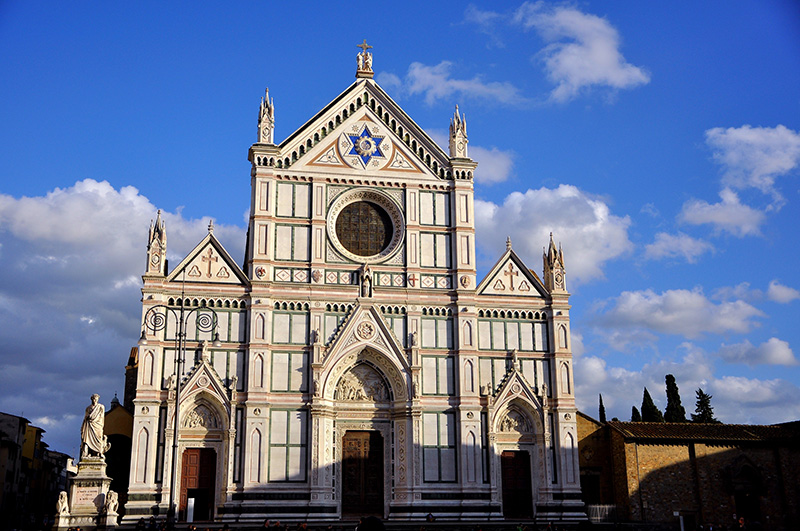The millennial history of Italy is deeply rooted in religious history and culture. From the numerous monasteries, shrines, churches and cities where the saints lived and worked, and where they are still invoked today as protectors and honored with grandiose celebrations. All Italian cities, large and small, are linked to the traditional celebrations of their patron saints made up of processions, choreography, music, songs and typical sweets. The most spectacular and impressive celebrations, however, are held in central-southern Italy and take place with rituals with long preparations.
Among these we remember the following patronal feasts:
Feast of Sant’Agata
Sant’Agata is the patron saint of the city of Catania, in Sicily. Virgin and martyr, the saint sustained many hardships and mistreatment by the proconsul Quinziano, but she did not give in. Catania recognizes its patroness from February 3rd-5th each year with grandiose celebrations, where the devotional element mixes with the folkloric one. The city is crossed by a solemn and imposing procession. The relics of the Saint are accompanied by eleven enormous candlesticks, which are imaginative vertical wooden sculptures with the salient episodes of the Saint’s life carved on them. The feast of Sant’Agata has been included in the world intangible cultural heritage of humanity by UNESCO.
Feast of votive candles
This patronal festival takes place every year on May 15th in Gubbio, in Umbria, to celebrate the patron saint Sant’Ubaldo. The votive candles are three heavy wooden artifacts surmounted by the statues of Sant’Ubaldo, San Giorgio and Sant’Antonio Abate. They are carried on the shoulders and running through the streets of the city to the Basilica of Sant’Ubaldo. Before the race, in Piazza Grande, the votive candles make three laps of the square. The procession with the statue of Sant’Ubaldo then begins from the cathedral to via Dante, where the Bishop blesses the votive candles, which thus begin their race through the main streets of the city. Back in Piazza Grande they complete three more laps. The votive candles are then placed in the Basilica of Sant’Ubaldo, while the statues of the three saints are brought back to the city amidst songs and torchlight processions.

Feast of San Sebastiano
The patronal feast of San Sebastiano, protector of the city of Syracuse, in Sicily, is held on January 20th every year in the historic center of Ortigia. However, the festival is also repeated on August 10th, with the same great devotion but with much more public and folklore. The celebrations see the evocative exit of the statue of the Saint and the relic from the church being carried on the shoulders while firecrackers and thousands of multicolored strips of paper fly everywhere. To the sound of the bands playing music, the two devotional items are followed by barefoot women and thousands of devotees, while babies and children are offered to the saint as a sign of devotion. The summer celebrations in honor of St. Sebastian last ten days, from August 8th – 17th.
Feast of Santa Rosa
The feast of Santa Rosa is celebrated on September 3rd in Viterbo. She is the patron saint of the city, who lived in the thirteenth century, and whose memory is recalled by the Viterbo people through a unique event in the world for its beauty, spectacularity and emotion. The main characteristic of this festival is the Santa Rosa machine consisting of a tower illuminated by torches and electric lights, made of light metals and modern materials such as fiberglass and standing about 150 feet high and weighing five tons. It’s raised on the evening of September 3rd and carried on the shoulders of a hundred men called “Facchini” along a path of just over a couple of miles through the streets and squares of the city center, in front of an excited audience.
Feast of San Gennaro
On September 19th the feast of his patron San Gennaro is celebrated in Naples, which culminates with the “miracle” of liquefaction: the martyr’s blood – collected after his beheading in 305 AD and preserved in two ampoules. It is exposed to the public by the Cardinal and his liquefaction is greeted by applause and thanksgiving prayers. The missed miracle is in fact considered a bad omen. The announcement of the liquefaction was made to the city with 21 cannon shots fired from Castel dell’Ovo. Surely one of the most intense moments of the celebration is the expectation of the dissolution of the blood during which the devotees gathered in the cathedral invoke the “miracle” with prayers, supplications and litanies.
